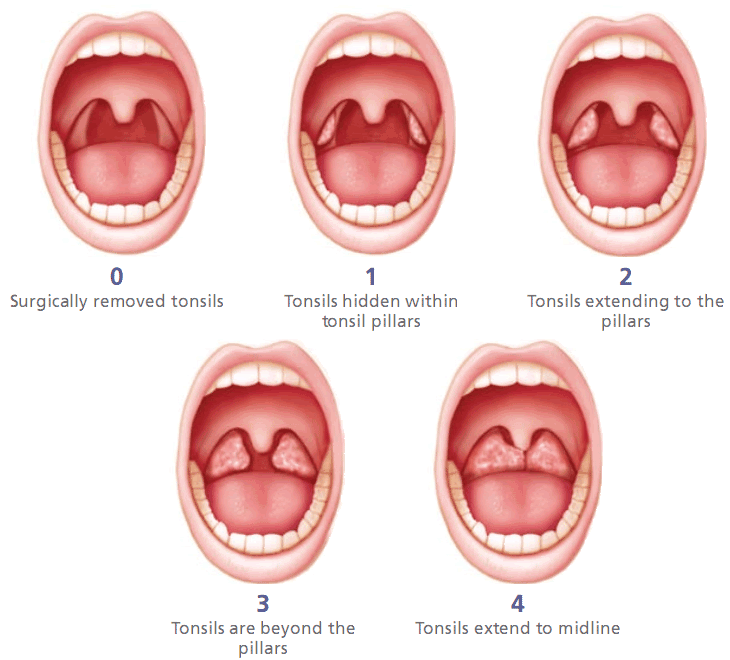What is a tonsillectomy?
A tonsillectomy is a surgical procedure performed to remove the TONSILS entirely.
What are some of the reasons a tonsillectomy is performed?
- A patient with four or more infections of the tonsils per year despite adequate medical therapy (antibiotics)
- Tonsillar hypertrophy (enlargement) causing snoring, pauses in breathing, restless sleep, difficulty swallowing or wetting the bed
- Chronic or recurrent TONSILLITIS associated with a “strep” carrier state, not responding to medical treatment.
- Persistent foul taste or bad breath due to chronic tonsillitis that is not responding to medical treatment.
- Peritonsillar abscess (collection of pus around the tonsil) that does not respond to medical treatment.
- One sided enlargement of the tonsil that is suspicious for malignancy (cancer)
What is involved with removing the tonsils?
This surgery is performed through the mouth with the patient under general anesthesia. The tongue is depressed and the tonsils are separated from the back of the throat using cautery. This technique allows the surgery to be performed with little or no bleeding.
This surgery is performed on an outpatient basis, although your child may spend as long as three to four hours in the hospital or surgery center following the surgery for observation. If your child is under 3 years of age, they may stay in the hospital overnight. The surgery itself lasts about 20 minutes, and the doctor will talk to you immediately following the surgery. Benefits of a full tonsillectomy is the tonsils should never grow back as they are fully removed. Recovery is traditionally 7-10 days with risks of bleeding and dehydration being reported between 1-5%.

An intracapsular tonsillectomy AKA Partial Intracapsular Tonsillectomy & Adenoidectomy (PITA) is a newer surgical procedure that removes most of the tonsil tissue while leaving the tonsil capsule intact to protect the throat muscles underneath. This procedure is less painful than a traditional tonsillectomy, which removes the entire tonsil and capsule, and has a lower risk of bleeding and a shorter recovery period. During an intracapsular tonsillectomy, a surgeon uses special instruments or a heat device to remove the tonsil up to the fibrous base between the tonsils and the throat muscles. The goal of this procedure is to achieve similar to a traditional tonsillectomy while protecting the underlying throat muscles and reducing the risk of post-operative pain and complications. In studies, PITA has been demonstrated as an effective treatment for tonsil related obstructive sleep apnea/sleep disordered breathing, tonsillitis, and tonsil stones. Bleed rate has been reported to be 1:1,000 with a much lower rate of operating room returns for bleeding. Tonsil re-growth has been reported to be between 2-5%.


